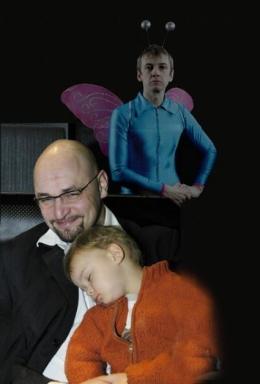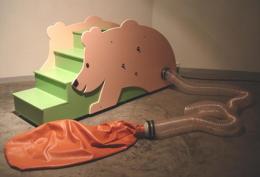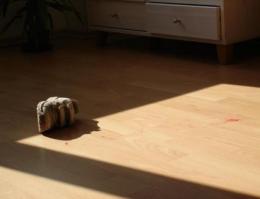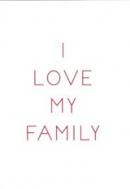ESTONIAN EXHIBITION AT THE 52nd VENICE BIENNIAL
PRESS RELEASE 29.05.2007

52. Esposizione Internazionale d’Arte - La Biennale di Venezia
52nd International Art Exhibition – La Biennale di Venezia
52. Veneetsia rahvusvaheline kunstibiennaal - La Biennale di Venezia
Loser´s Paradise
by MARKO MÄETAMM
Palazzo Malipiero, S. Marco 3079, Veneetsia
10.06.–21.11.2007
The World’s Most Naive Artist
Marko Mäetamm has a confession to make. Or sorry, let me rephrase this: he has loads and loads of confessions to make. He wants to tell it all, just everything to us, and he wants us to listen to his worries and problems. Mäetamm is confused, he feels weak and almost completely inadequate when facing the demands and challenges of the contemporary world. He is afraid of failing, of losing his job, of not being able to pay his bank loan. He feels miserable without his wife and kids but feels equally unhappy when being with them. In other words, Mäetamm seems to be in a deep mess.
But hold on, are these confessions as works of art true? Does he really mean it? Sure, of course they are both-and. These litanies of failures of coping with modern life are obviously and painstakingly as true as they are blue, but at the same time, they are also something else. They are, not so surprisingly, made, re-shaped and coloured by a wide variety of white lies. You know, with all the shades between pure white to grey on grey as in dirty snow. In short, they are stories. And yes, they are fabulously well and vividly told and expressed stories with the means of contemporary art and visual culture.
The project Marko Mäetamm presents at the Estonian pavilion has the title of Loser’s Paradise. A title that again simultaneously tells it all while quickly camouflaging the actions and covering his traces. It is a project that can alternatively be filed under a) Collection of Modern Miseries, b) I Told You So, c) A Good Idea, and d) When is Supper, Honey? It is a project, which constantly and with amazing coherence plays with the double act of telling and showing it all and not telling and showing anything at all. The point being: this is a body of work that you can’t explain away or solve. It stays there to haunt you, to bug you with more and more questions about was it really like that, or was it again just another lie?
With the strategy of going head on, and seemingly without a helmet, against the mighty currents of our daily lives in so called western market orientated capitalist systems, Mäetamm is able to combine something personal with something very common and general. Even if most of us will never go and make public announcements how lost and lonely we feel, it is inevitable that we know more than well what Mäetamm is hinting at. We sense the pressure to compete, we live with and through the necessity to succeed. We face fear, we see pain – and we do all that is in our abilities and powers to deny it.
I don’t think Mäetamm is actually doing it for us – a kind of biblical character for taking the blame and facing the blows for others. For this, he is much too smart, and much too clever. He certainly has the magic touch of orchestrating and constructing an identity within a specific and particular site of a story. When taking on the role of the world’s most naïve artist, he must have sensed a kind of liberating relief. He lets us think that he pours it all out, without leaving any secrets, any dirty clothes in the closet. He claims that “I have a great feeling of helplessness, I don’t know what to do…”
And sure, there is no way of denying it. Mäetamm feels like a murderer. He dreams of houses that burst out with blood and terror. He does think he is worth nothing at all. But the irony, the deep-seated pleasure of the whole act of acting as naïve as possible is the trick of turning it all around. Mäetamm addresses the miseries of a white man nearing the abyss of middle-age by therapeutically making a long, long list of them. He gets closer to all the things that he dislikes and fears in his daily life. He gets closer and closer, constantly increasing the amount of seemingly helpless whining and moaning.
At the end, he has crawled into a position where he is so small and so vulnerable that it is impossible not to feel pity for and anger at him. Here again, the double act of being simultaneously this and that, sugar and spice, hot and cold, smart and stupid, sensual and opportunistic generates a situation in which we also begin to feel helpless. We are confronted with such an amount of sentimental trash that we simply can’t take it anymore. We need to consider violence, we need to look for the chance to lurk behind this annoying artist and really give him the kick he deserves. We start to burn with the need to go and shout: stop complaining, stop crying, you, you, you ….
But no, we will not do it. We will walk through the rooms at the pavilion, and we will get more confused, more surprised, more annoyed and also more entertained. Slowly but surely, the more you spent time with his paintings, sculptures and videos, the more you will appreciate that this is all not that serious. It is a carnival. Admittedly, it is a very peculiar type of a carnival. A celebration of failure – but, please pay attention, not in order to fail more, or even to fail better, but as an act of private and public disgrace. It is about humiliation done of free will. A concert of the multiple ways of how one feels inadequate and plain dumb, a collection of deeds one cannot solve or come to terms with.
It is a carnival of the most clever kind. A carnival that in a perverse way turns out to be a very accurate and effective way of criticizing the contemporary ideology of market-led one-size fits all consumer culture. By carefully bringing up all the ways Mäetamm cannot cope with the demands of the culture of all-encompassing consumerism, he not only articulates the ways he is completely useless to the system, but how he, step by step, distances himself from the semi-fascist orthodoxy that anything and everything in our daily life world must be products we sell, trade, buy, steal, confiscate, recycle and throw away.
In the end, for me, the Loser’s Paradise project of Mäetamm is full of hope. It shows us a way out of the current demagogy of no alternatives. There is always a choice, always a way out. Always something to hold on to, always something to be told to someone else that makes all of us feel a little bit less lost and lonely.
Curator Mika Hannula
Collateral events:
June 3 rd, 7 pm: low-key party, bar La Maniglia di Baldassarre, San Polo, 101; DJ Mika Hannula
June 8 th, 4 pm: vernissage, Palazzo Malipiero, S. Marco 3079
June 9 th, 10.30 am: press conference, Teatro Piccolo in the Arsenale, Calle della Tana, 2168/B
PRESS RELEASE
Estonia at the Venice Biennale 2007
52. Esposizione Internazionale d’Arte - La Biennale di Venezia
52nd International Art Exhibition – La Biennale di Venezia
Marko Mäetamm’s project
LOSER’S PARADISE
Curator Mika Hannula (Berlin-Helsinki)
Exhibition:
June 10th – November 21st, 2007
Vernissage: June 8 th, 2007
Palazzo Malipiero
San Marco 3079
Venezia
The Estonian artist Marko Mäetamm presents a solo exhibition called LOSER’S PARADISE, which will represent Estonia at the 52nd International Art Exhibition, La Biennale di Venezia, in 2007. The exhibition at the Estonian Pavilion is curated by Mika Hannula and commissioned by Center of Contemporary Arts, Estonia.
For the current exhibition, Mäetamm has created a conceptual framework that holds together all the new works done especially for this event; works that range from video installation via sculpture to paintings. A framework that guides the visitor through a setting that delivers what it promises: an all-encompassing view on the private sphere of a truly confused individual. What we see and hear is the litany of the ways how a specific person, this time highly personally the artist himself, fails to cope with contemporary pressure of success and competition. And yes, what we also see is how his fears and agonies have turned into violence and murder – descriptively speaking.
However, as the saying goes, if everything is wrong, then what is possibly right? Thus, what we feel and relate to is much more than meets the eye. Marko Mäetamm’s story in itself is so exaggerated, so over-whelming at its whining tone that as a viewer you can’t escape the feeling that something strange is going on. Isn’t his confession a bit too real? Can this actually be an autobiographical narrative? How much of his personal pain is manufactured and constructed?
All assumptions and assertions come together in the interactive play between experience and expectation, between real and fake, between soft and hard, sugar and spice, love and hate. We have no way of knowing. All we can do is to go with the flow at the site of the Estonian Pavilion and enjoy this weirdly enjoyable visual narrative with physical dimensions. Here, we confront a complex conceptual work in which Marko Mäetamm presents himself as a master of manipulation, an artist who certainly knows how to twist and turn the tales within the exhibition format. A story as in a proper gesamtkunstwerk that leaves you “violently happy”.
Mika Hannula
Commissioner: Johannes Saar (head of the Center For Contemporary Arts, Estonia)
Deputy Commissioners: Elin Kard (project manager of the Center For Contemporary Arts, Estonia) and Andris Brinkmanis

Photomontage: Mika Hannula (with Marko Mäetamm “hovering” on the background)

Marko Mäetamm, "Meat Chopper", installation, 2006

Marko Mäetamm, "Worrying view. A floor", photo, 2006

Project catalogue: I LOVE MY FAMILY, Center For Contemporary Arts, Estonia 2007, ISBN 978-9985-9778-3-5